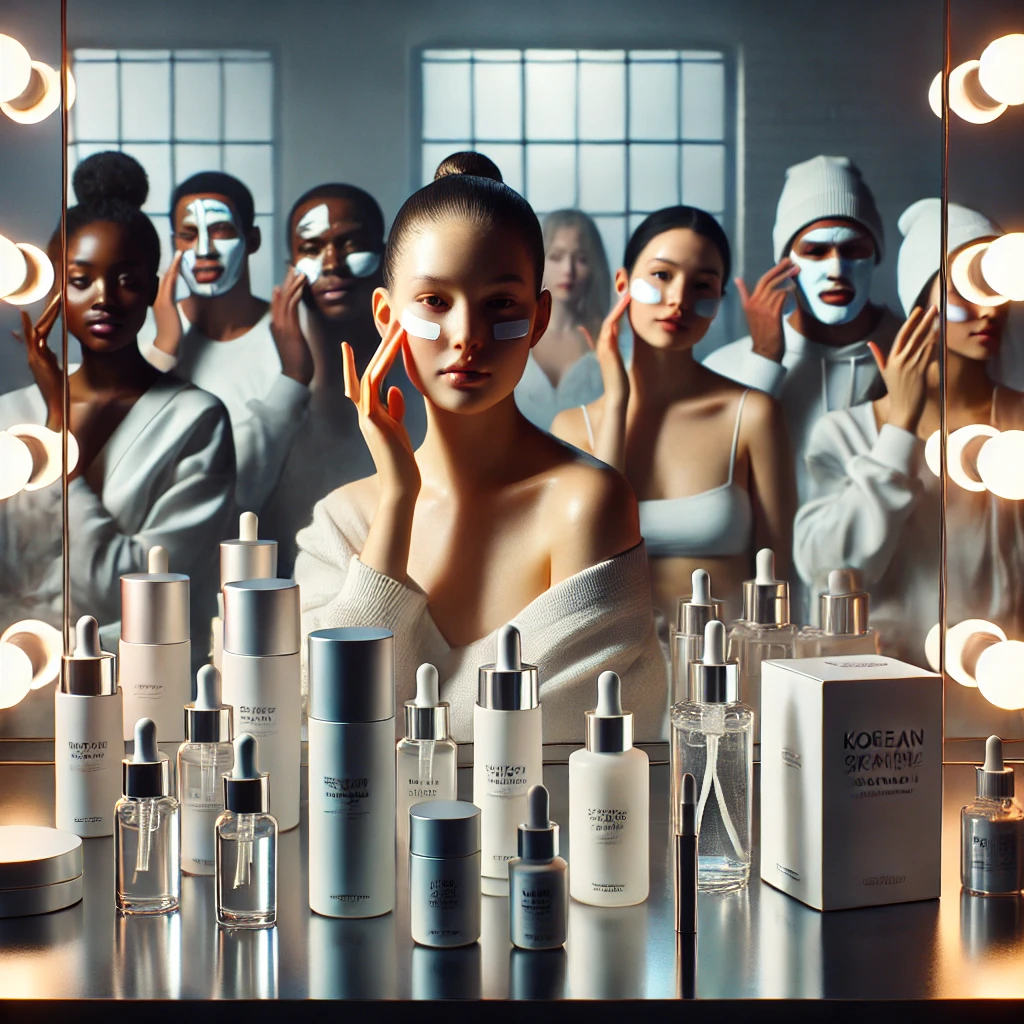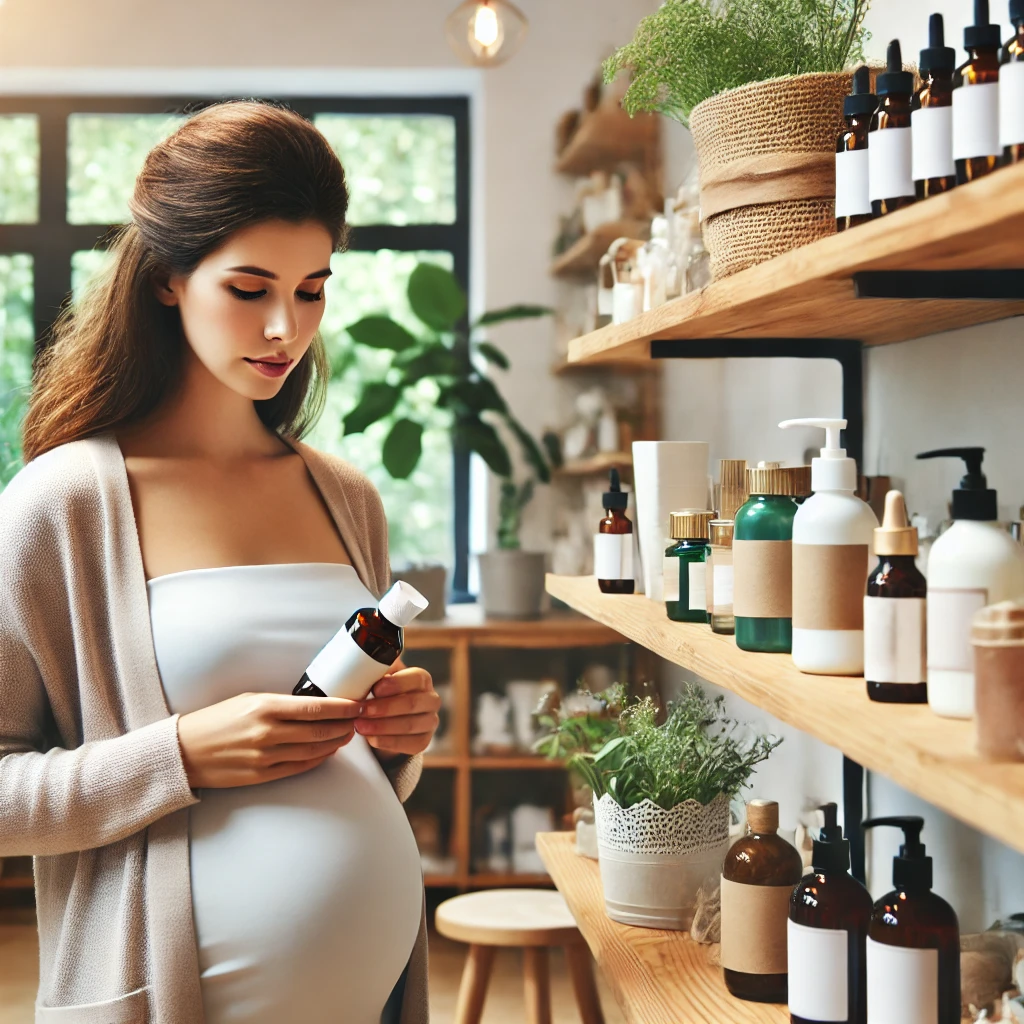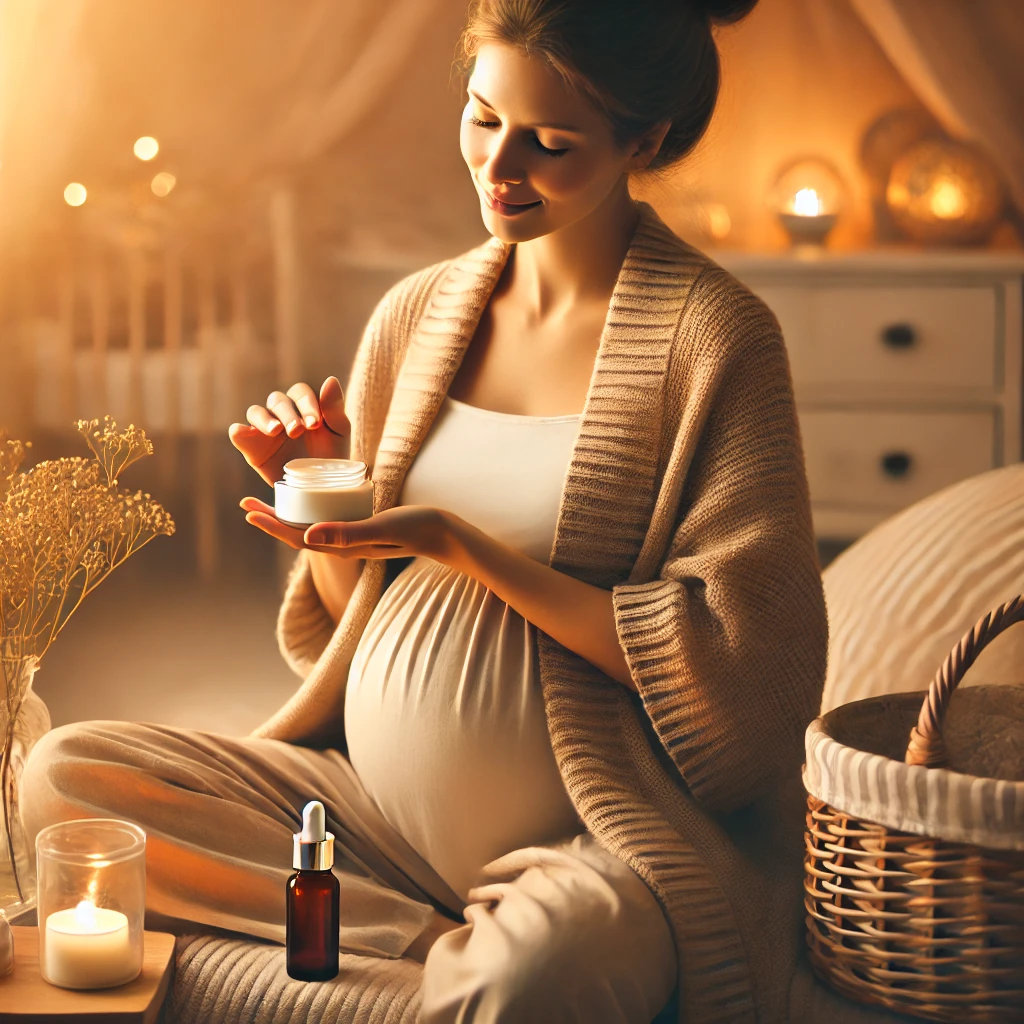Table of Contents
Introduction to K-Beauty
K-Beauty, or Korean Beauty, represents a transformative approach to skincare rooted in South Korean culture and aesthetics. This phenomenon encompasses not just a distinctive range of skincare products, but also a comprehensive philosophy towards skincare rituals, emphasizing hydration, protection, and prolonged skin health. Over the past decade, K-Beauty has captured the interest of consumers worldwide, especially in the United States, where it has evolved into a full-fledged trend among skincare enthusiasts.
One of the hallmarks of K-Beauty is its multi-step skincare routine, which can involve anywhere from five to ten different products. This regimen often includes steps such as cleansing, exfoliating, toning, applying serums, and moisturizing, culminating in a meticulous method designed to care for the skin. Consumers are often drawn to the promise of enhanced skin texture, clarity, and overall resilience. The use of innovative ingredients—ranging from traditional botanicals to advancements in technology—has greatly contributed to the appeal of these products. Ingredients like snail mucin, hyaluronic acid, and various plant extracts are commonly found in K-Beauty formulations, signifying a departure from more conventional skincare regimens.

The meteoric rise of K-Beauty in the United States is emblematic of a larger trend towards globalization of beauty standards. Social media platforms like Instagram and TikTok have played a pivotal role in propagating K-Beauty, where influencers and beauty aficionados share their skincare journeys and product reviews, influencing consumer choices. With a burgeoning interest in self-care and holistic approaches to skincare, many Americans are increasingly receptive to exploring diverse beauty traditions. As this excitement surrounding K-Beauty continues to grow, so too does its influence on the cosmetics industry and consumer preferences.
The Innovative Ingredients Behind K-Beauty
Korean skincare, commonly referred to as K-Beauty, has garnered a significant following in the United States, mainly due to its innovative and unique ingredients. Among these, snail mucin stands out as a remarkable element often heralded for its skin-repairing properties. This secretion, which is produced by snails, is rich in glycoproteins, hyaluronic acid, glycolic acid, and various enzymes. These components are believed to aid in cellular regeneration and enhance skin hydration, making products containing snail mucin particularly appealing to those seeking to improve skin texture and elasticity.
Another key ingredient prominent in K-Beauty formulations is green tea. This botanical extract is celebrated for its antioxidant properties, which help combat free radicals and reduce inflammation. Studies have shown that green tea can be effective in treating acne and improving skin conditions due to its anti-inflammatory qualities. The integration of green tea into skincare routines has led many consumers to prefer K-Beauty products that utilize this science-backed ingredient over traditional options.
Furthermore, ginseng has emerged as a staple in K-Beauty, recognized for its numerous benefits. This herb is revered not only for its adaptogenic qualities but also for its ability to promote circulation, stimulate collagen production, and impart a healthy glow to the skin. Research indicates that ginseng can improve skin elasticity and reduce the signs of aging, thus making it an essential component of many high-performing skincare products. As K-Beauty continues to weave these unique ingredients into its offerings, it is clear that they present an appealing alternative to more conventional Western ingredients. This shift towards natural, innovative formulations is what captivates American consumers, leading them to embrace K-Beauty in their daily routines.
The Multi-Step Skincare Routine
The hallmark of Korean beauty, or K-Beauty, is undoubtedly the multi-step skincare routine. This elaborate regimen usually involves anywhere from seven to thirteen steps, which may include cleansing, toning, applying essence, serums, sheet masks, moisturizer, and sunscreen. Each step serves a specific purpose designed to nourish the skin deeply and optimize its health. The comprehensive nature of this routine is in stark contrast to the often simpler skincare methods favored in Western cultures, where fewer products are typically used.
Cleansing is the first and arguably the most crucial step in this skincare regime. K-Beauty enthusiasts often engage in a double cleansing process, utilizing an oil-based cleanser followed by a water-based one to thoroughly remove impurities and ensure a clean canvas for subsequent products. Following this, a toner is applied to restore pH balance and prepare the skin for better absorption of later products. The layering continues with essences and serums, which are packed with active ingredients that target specific skin concerns such as dryness, pigmentation, or signs of aging.
This multifaceted approach extends the concept of skincare beyond mere beautification; it transforms it into a cherished ritual. Many Americans find this process appealing as it emphasizes self-care, offering an opportunity to pause and invest time in oneself. Amidst the demands of daily life, engaging in a detailed skincare routine can serve as a moment of relaxation and mindfulness, enabling individuals to feel more connected to their self-image. Furthermore, the wealth of products available allows for customization, enabling users to tailor their regimens to their unique skin types and concerns. This personal touch contributes to the growing appeal of the K-Beauty movement in the United States.
The Role of Social Media and Influencers
The rise of K-beauty in the United States can be largely attributed to the powerful impact of social media platforms such as Instagram and TikTok. These platforms have transformed the way beauty products are marketed and consumed, creating a vibrant online community that thrives on visual content and dynamic engaged discussions. Beauty bloggers and skincare influencers are pivotal in this landscape, serving as trusted sources of information and recommendations for their followers.
On Instagram, meticulously curated feeds featuring aesthetically pleasing images of K-beauty products have garnered significant attention. Influencers often share their personal experiences, showcasing how Korean skincare has positively impacted their skin. This not only drives consumer interest but also encourages followers to explore various K-beauty routines and products. The use of hashtags, particularly those specific to K-beauty, has further amplified this trend, allowing content related to Korean skincare to spread rapidly across the platform.
Similarly, TikTok has emerged as a powerful medium for the dissemination of skincare knowledge, with beauty trends often going viral. The platform’s short-form video format allows influencers to demonstrate K-beauty routines, showcasing products in real time. The engaging nature of these videos, combined with the authenticity that users perceive in influencers, cultivates a culture of trust. As a result, audiences are more likely to invest in the products featured, fostering a sense of community and shared exploration among skincare enthusiasts. K-pop idols also play a significant role in this trend; their celebrity endorsements and flawless complexions often inspire fans to emulate their skincare regimens, further solidifying the allure of K-beauty in American culture.
As social media continues to evolve, the relationship between influencers and their audiences enhances the visibility and accessibility of K-beauty products, establishing them as not just a trend, but a significant aspect of modern skincare practices in America.
The Emphasis on Hydration and Glow
The K-Beauty philosophy is centered around achieving healthy and deeply hydrated skin, often referred to as the ‘glass skin’ look. This aesthetic is characterized by a luminous and translucent complexion that reflects light, giving skin an appearance that is not only visually appealing but also conveys well-being. This focus on hydration marks a significant shift from previous beauty ideals often prevalent in the United States, where matte and minimalistic finishes dominated the landscape. In contrast, the K-Beauty approach emphasizes a dewy glow, prioritizing moisture retention and nourishment as vital components of the skincare regimen.
Americans are increasingly drawn to K-Beauty routines that typically involve multiple steps, layering products that deliver hydration at various levels. Products like essence, serums, and hydrating masks work synergistically to elevate moisture content, leading to enhanced skin texture and a radiant appearance. This method stands in stark contrast to traditional Western skincare practices that often favored heavier creams and oils, sometimes at the expense of hydration. The shift towards a more hydrating regimen aligns closely with the growing recognition of the importance of moisture in maintaining skin health.
The pursuit of a well-hydrated complexion also reflects broader lifestyle changes among American consumers. With an increasing emphasis on self-care and wellness, individuals are proactive about investing time and resources into skincare routines that prioritize health over aesthetics. As people become more informed about the long-term benefits of consistent hydration, they are drawn to K-Beauty’s innovative products and techniques that promise the coveted glowing skin. This engagement not only showcases a shift in beauty values but also highlights the blending of cultural influences in the global beauty arena, as Americans embrace the practicality and effectiveness of K-Beauty hydration methods.
Affordability and Accessibility of K-Beauty Products
The K-beauty industry has rapidly gained popularity in the United States, largely due to the affordability and accessibility of its products. Characterized as “affordable luxury,” many Korean skincare items are priced reasonably, making them attractive to a broad audience. This pricing structure allows consumers to experiment with various products without committing a significant portion of their budget. Several brands offer high-quality formulations that do not compromise effectiveness, enabling users to achieve desirable skincare results at a fraction of the cost of some domestic alternatives.
Moreover, the affordability of K-beauty products extends beyond their price tags. Many brands are committed to using quality ingredients and thoughtful formulations, ensuring that customers receive excellent value for their investment. This approach resonates with consumers seeking effective skincare solutions that fit their financial constraints, ultimately resulting in increased customer satisfaction and brand loyalty.
In addition to their attractive pricing, the accessibility of K-beauty products has significantly contributed to their success. With the rise of e-commerce, many consumers can discover and purchase these products from the comfort of their homes. Websites dedicated to Korean beauty products have proliferated, providing detailed information about each item, including ingredient lists, application techniques, and customer reviews. This transparency allows users to make informed decisions, enhancing their overall shopping experience.
Furthermore, more brick-and-mortar retailers are incorporating Korean skincare lines into their offerings, making these products readily available for direct purchase. Stores specializing in Asian cosmetics, as well as mainstream beauty retailers, often allocate shelf space to popular K-beauty brands. This increased distribution reinforces the visibility and mainstream acceptance of K-beauty in American culture, encouraging a phenomenon where consumers continuously seek new discoveries that align with their skincare needs and preferences.
Cultural Curiosity and Globalization
Over the past decade, Korean culture has gained formidable traction in the United States, largely attributable to the Korean Wave, or Hallyu. This cultural phenomenon encompasses a variety of forms, including music, television dramas, and fashion, which have significantly captivated American audiences. The popularity of K-Pop groups such as BTS and TWICE, alongside hit series like “Crash Landing on You” and “Parasite,” has created a strong foundation for an interest in broader aspects of Korean life, including beauty standards and skincare practices.
As fans consume K-Pop music and watch K-Dramas, they are increasingly exposed to the distinct beauty ideals promoted in these mediums. The flawless skin and meticulous beauty routines of idols serve as aspirational models for many fans, prompting a sense of admiration and curiosity. This interest has catalyzed an exploration into the philosophies and rituals surrounding Korean skincare. Recognizing the commitment and innovations in the K-Beauty industry, American consumers have begun to adopt these routines, which often prioritize hydration, protection, and prevention—methods that differ from traditional Western skincare approaches.
Moreover, globalization has played a pivotal role in facilitating this cultural exchange. The rise of social media platforms has amplified the dissemination of beauty trends and Korean culture, allowing influencers and skin enthusiasts to share their experiences and recommendations with a wider audience. Tutorials on social media showcasing K-Beauty routines and the use of Korean skincare products have led to a surge in demand for these items in U.S. markets. Consequently, American consumers are not merely passive observers; they are actively engaging with and incorporating K-Beauty into their daily lives, reflecting a broader trend of cultural curiosity intertwined with globalization. This dynamic relationship further fuels the K-Beauty craze, signaling a shift in the perception of beauty standards across cultural boundaries.
Sustainability and Ethical Practices in K-Beauty
Korean beauty (K-Beauty) has gained significant traction in the United States, primarily due to its innovative products and effective skincare routines. However, an important trend within this phenomenon is the increasing focus on sustainability and ethical practices among K-Beauty brands. As consumers become more aware of the ramifications of their purchasing decisions, they are advocating for eco-friendliness and cruelty-free products, driving brands in the K-Beauty sector to adapt accordingly.
Many K-Beauty brands are now prioritizing sustainable sourcing, utilizing natural ingredients that are both effective and eco-friendly. This shift not only addresses environmental concerns but also aligns with the broader global movement towards responsible consumerism. For instance, several brands have introduced eco-conscious packaging solutions, such as biodegradable materials and refillable containers, to minimize waste generated by traditional cosmetic products. This innovative approach caters to environmentally aware consumers who are increasingly interested in the lifecycle of their skincare items.
In addition to sustainable sourcing, ethical production practices are gaining importance. Many K-Beauty companies are ensuring that their products are not tested on animals, thereby catering to the growing segment of consumers who prioritize cruelty-free options. Furthermore, brands are increasingly transparent about their ingredients, production processes, and ethical commitments, fostering trust among consumers who seek brands that practice integrity and accountability.
The integration of sustainability and ethical practices is not just a fleeting trend; it reflects a long-term shift in consumer behavior. As more Americans seek out brands that resonate with their values, K-Beauty companies that invest in these principles may stand out in a competitive market. By prioritizing sustainable initiatives and ethical practices, these brands are not only contributing positively to the planet but are also meeting the evolving demands of a more conscious consumer base.
Conclusion: The Future of K-Beauty in America
In recent years, the K-Beauty trend has significantly transformed the skincare landscape in the United States, appealing to a broad audience with its innovative products and unique philosophies. The integration of Korean skincare methods into American beauty routines is not merely a passing fad; rather, it signifies a cultural shift towards more effective and holistic approaches to skincare. The multi-step routines, which emphasize hydration, nourishment, and prevention, have introduced a new level of care that many consumers find appealing.
The sustainability of the K-Beauty craze seems promising, as brands continue to expand their offerings to cater to the evolving preferences of American consumers. With an increased demand for transparency in ingredient sourcing and a focus on clean beauty, many K-Beauty brands are adapting their formulations to meet these expectations. This evolution reflects a broader trend within the beauty industry towards inclusivity and environmental consciousness, allowing K-Beauty to thrive while resonating with the values of modern consumers.
Looking ahead, we can expect further innovation from Korean skincare brands as they continue to explore advanced technologies and ingredients, perhaps even venturing into personalized skincare solutions. Additionally, the ongoing collaboration between K-Beauty companies and American influencers is likely to enhance the connection between the two markets, offering localized marketing strategies that appeal directly to American consumers.
As the K-Beauty trend matures, it is evident that its principles of care, efficacy, and ritualistic pampering will remain influential. The fascination with K-Beauty is rooted not only in the products themselves but also in a cultural appreciation for wellness and self-care. Therefore, it is reasonable to assume that Korean skincare practices will continue to hold a prominent place in the U.S. beauty market for the foreseeable future, paving the way for ongoing trends that prioritize health and wellbeing in personal care routines.





